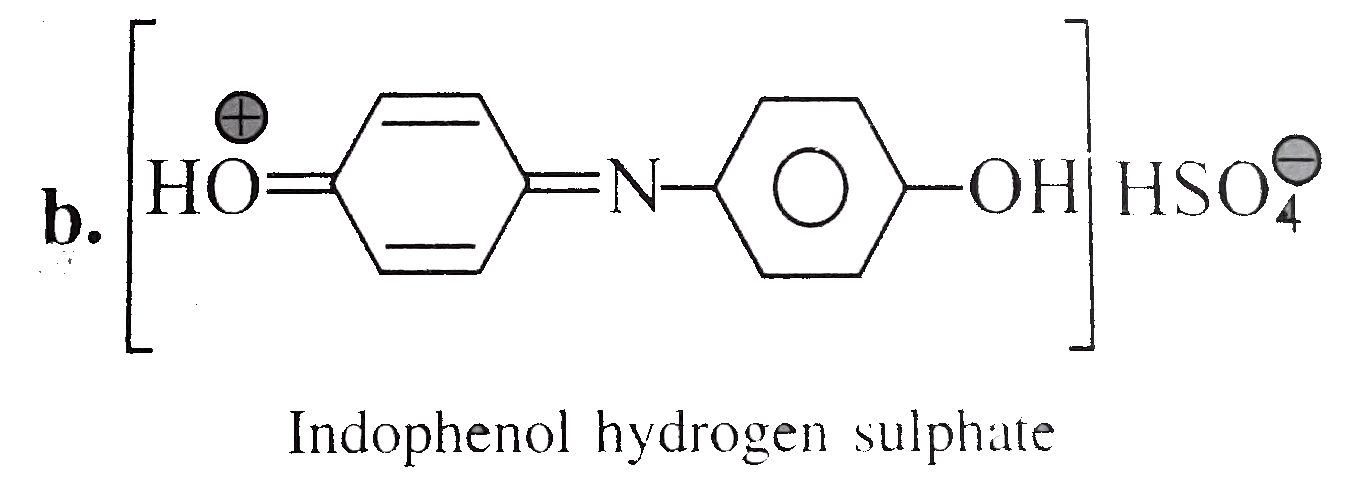Neutral ferric chloride is added to the aqueous solution of acetate. The blood red colour is obtained, it is due to the compound
Fe(OH)2
Fe(OH)3
Fe(CH3COO)3
Fe(OH)2(CH3COO)
The correct Answer is:C
3CH2COONa+FeCl3→Fe(CH3COO)+3NaClblood red ppt.
Topper's Solved these Questions
- ANALYTICAL CHEMISTRYBOOK - ERRORLESS CHAPTER - ANALYTICAL CHEMISTRYEXERCISE - Ordinary Thinking Objective Questions (Wet Test for Acid Radical)
26 Videos
- ANALYTICAL CHEMISTRYBOOK - ERRORLESS CHAPTER - ANALYTICAL CHEMISTRYEXERCISE - Ordinary Thinking Objective Questions (Wet Test for Basic Radical)
71 Videos
- ANALYTICAL CHEMISTRYBOOK - ERRORLESS CHAPTER - ANALYTICAL CHEMISTRYEXERCISE - JEE Section (Only One Choice Answer)
36 Videos
- ALDEHYDES AND KETONES BOOK - ERRORLESS CHAPTER - ALDEHYDES AND KETONES EXERCISE - JEE Section (JEE (Advanced) 2018) Numeric answer type question
1 Videos
- BIOMOLECULES AND POLYMERBOOK - ERRORLESS CHAPTER - BIOMOLECULES AND POLYMEREXERCISE - Jee section (Jee (Advanced 2018)) (More than one choice correct answer)
1 Videos
Similar Questions
A metal chloride (X) shows the following reactions :
(i) When H2S is passed in acidified aqueous solution of (X) a black ppt. is obtained.
(ii) The ppt. obtained in step (i) is not soluble in yellow ammonium sulphide.
(iii) When a solution of stannous chloride is added to an aqueous solution of X, a white ppt. is obtained which turns grey on addition of more stannous chloride.
(iv) When an aqueous solution of KI is added to an aqueous solution of (X) a red ppt. is obtained which dissolved on addition of excess of KI. Identify X and write down equation for the reactions at step (i), (ii), (iii) & (iv).
View SolutionIn the Lassaigne’s test, the blood red colouration is due to the formation of
View Solution
Knowledge Check
Aqueous solution of ferric chloride is
AAcidicBBasicCNeutralDAmphotericWhen excess of dilute NH4OH is added to an aqueous solution of copper sulphate, an intense blue colour is obtained. This is due to the presence of
ACuSO4BCu(OH)2C[Cu(NH3)4]2+D(NH4)2SO4
The red colour of compound (B) is due to the formation of:Aa. Bb.
Bb. Cc.
Cc. Dd.Both (a) and (b).
Dd.Both (a) and (b).
In Lassaigne's test, when both N and S are present blood red colour is obtained. This is due to the formation of
View SolutionNeutral ferric chloride test can be used to distinguish between
View SolutionPotassium chromate solution is added to an aqueous solution of a metal chloride. The yellow precipitate thus obtained is insoluble in acetic acid. The precipitate is subjected to flame test, the colour of the flame is :
View SolutionPotassium chromate solution is added to an aqueous solution of a metal chlrodie. The precipitate thus obtained are insoluble in acetic acid. These are subjected to flame test, the colour of the flame is
View SolutionWhen ferric chloride is added to potassium ferrocyanide there is formation of
View Solution
